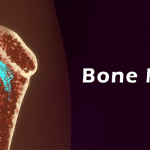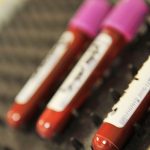National Leukemia Awareness Month: Facts, Prevention & Treatment
September is National Leukemia Awareness Month, cancer of the white blood cells; a time intended to inform the general public about this specific form of cancer and help people recognize the disease’s early warnings. According to the Cancer Research Institute (CRI), “an estimated 440,000 new leukemia cases are diagnosed each year, along with 310,000 deaths.” The CRI also states that most leukemia cases diagnosed are in adults over the age of 55, but that it is also “the most common cancer in children younger than 15 years.”
This disease can affect anyone, and treatment types differ by each patient’s age and individual condition. Catching the symptoms as early as possible is vital to increase the patient’s chances of improvement. Get out an orange ribbon and read on to learn about this disease’s facts, prevention methods, and current treatment plans for those diagnosed with leukemia.
What is leukemia?
Leukemia is a form of cancer that is found primarily in the blood cells. It also affects a person’s lymph nodes and bone marrow. It is most often associated with white blood cells but can start in any kind of blood cell. There are four different kinds of leukemia, determined by whether the cancer cells are growing slowly or aggressively and the type of blood cell from which they originated.
Cancer is a disease caused by cells that keep growing and making more copies of themselves past the point when they should have naturally stopped. The cancerous cells take up space where the regular cells should be and are known for their ability to spread even further throughout the body. The parts of the body where cancer began determines how the disease is named. Therefore, the name leukemia is for the white blood cells, also known as leukocytes.
Because leukemia is so widespread, attacking both the young and old in huge numbers, understanding the symptoms is essential. Each kind of leukemia has a different survival rate, and the treatment options available also vary. However, stay mindful that now, more than ever, people are recovering from their diagnosed cancer, which is known as “going into remission.”
What are the symptoms of leukemia?
Many leukemia symptoms, such as fever, chills, fatigue, and weight loss, can be confused for other ailments. However, some provide clues that can quickly lead a doctor to the correct diagnosis.
Since leukemia primarily affects the blood cells, one clear sign is difficulty with blood clotting. If a person finds themselves bleeding or bruising more often, and those wounds take much longer to go away, cancerous cells could be the cause. Check for small spots that are either red or purple, since these are another sign that your blood has trouble clotting well.
You may also find yourself getting sick more often. White blood cells form the backbone of our immune system. If cancerous cells crowd them out, the immune system may start attacking itself.
If your red blood cells are the ones that are most affected, however, you may become anemic. In this state, you will feel tired and weak because you need more iron in your system. The iron would typically come from hemoglobin, which is transported by the red blood cells affected by leukemia. Anemia can also make your skin look paler, and you may find that you have trouble breathing well.
Although knowing the warning signs helps immensely, these symptoms alone cannot prove a person has leukemia. They could also be proof of another sickness. The only way to know whether you have leukemia is to consult a medical professional and have it properly diagnosed.
How is leukemia diagnosed?
If you are experiencing these symptoms, contact your doctor as soon as possible. The best way to know for sure if you have leukemia is to get an in-person physical assessment. Your doctor will need to draw blood to inspect the cells. They may also check your lymph nodes, spleen, and liver to see if any swelling is present.
Also, your doctor may request a sample of your bone marrow to test for any cancerous presence. This sampling will allow your doctor to send your bone tissue and fluid to specialists who can determine the kind of leukemia you have and the most effective treatment. The procedure involves inserting a long needle into your hip to access the marrow easily. It often allows for a much quicker diagnosis than just a blood test alone.
What are the different types of leukemia?
There are four specific types of leukemia. Half are acute, meaning that the cells increase rapidly, and the other half are chronic, so they move much more slowly. These types affect the kind of treatment that will be needed and the general prognosis for the patient.
The four major kinds of leukemia are:
- Acute lymphocytic leukemia: ALL is the most common kind of leukemia to affect children, and it originates in the bone marrow itself. Because it is acute, this type of leukemia grows aggressively.
- Chronic lymphocytic leukemia: CLL grows in bone marrow, too, explicitly targeting white blood cells there. According to the American Cancer Society, it “accounts for about one-third of all leukemias.” This chronic version of the disease moves more slowly than its acute counterparts.
- Acute myeloid leukemia: The name AML is due to the myeloid cells where it originates. These cells have the capability to become white blood cells, red blood cells, or platelets, meaning that any trouble with blood clotting could come from issues here. Older people are more likely to have this aggressive form of leukemia.
- Chronic myeloid leukemia: Another version of leukemia that spreads slowly, CML, is also a lesser-seen form of this cancer. It also mostly affects older people. Just like AML, CML attacks the myeloid cells, thus directly invading the patient’s blood from their bone marrow, which makes the blood.
What is the treatment for leukemia?
As with all cancers, the most common treatment doctors use first for leukemia is chemotherapy. These rounds of medicine kill cancer cells with potent doses of compounds aimed at particular proteins. Chemotherapy is well-known for its potential side effects, such as hair loss throughout the body, nausea, and fatigue. Although it can be harsh on the body, it is the first line of defense against aggressively-growing cancer and helps relieve some disease symptoms.
Radiation therapy is also an option to target specific areas, such as large cancerous tumors. Radiation directly affects your DNA, so your medical team may suggest its use over an extended period of time to shrink a tumor or kill cancer cells. It can also be combined with surgery to remove a tumor.
However, some leukemia treatments involve immunotherapy, which targets the immune system. These medicines help your immune system to find and fight cancer cells. They also strengthen functional cells to help improve their ability to fend off cancer.
Immunotherapy can take several different forms, including vaccines, antibodies, and viruses that infect tumors. Often, it is used alongside chemotherapy and surgery to produce the best results possible for the patient.
Leukemia Awareness Month resources
To learn more about leukemia and leukemia awareness month, check out these resources.
The Leukemia and Lymphoma Society is the largest nonprofit organization of its kind. It actively provides support to individuals affected by leukemia and is a fantastic resource for information about Leukemia Awareness Month. Look for the LLS hashtag, “#FightBloodCancer,” on social media.
The Lymphoma Coalition and International Myeloma Foundation are two other fantastic resources for blood cancer patients and loved ones of those affected. For more information about both leukemia and cancer in general, visit the National Cancer Institute and American Society of Clinical Oncology.
World Lymphoma Awareness Day takes place on September 15, so keep this date in mind if you want to show support through a fundraiser or by wearing orange.
Leukemia treatment in Raleigh
If you are concerned that you may be suffering from leukemia, you should contact a doctor as soon as possible. After a diagnosis is confirmed, take some time to research your options further to be as comfortable as possible with your treatment plan options. The PHO team will work with you to achieve the best care for your body’s needs and specific cancer type. Contact us for more information.
If you are the loved one of a leukemia patient or simply want to spread more awareness about this form of cancer, remember that orange is the color that represents leukemia. Share information along with an orange ribbon on social media or wear orange to a Relay for Life or other cancer awareness event.





